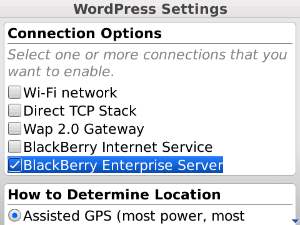I use Nagios to monitor my own servers (and clients’ servers and my employers’ servers, too) and I am giving the new Nagios V-Shell a test-run.
Why? I don’t actually care much about the fact that it’s written in PHP and generates valid XHTML. I am rather interested in the fact that it doesn’t use frames. My hopes are that the interface works nicely on BlackBerries and other smartphones. – Yes, there are frontends which were designed with small screens in mind, but they are either too focused on iPhones or Android with heavy use of JavaScript, or lack some important features such as the ability to acknowledge host or service states etc.
I have yet to test the V-Shell with multiple users, or other users than “nagiosadmin”… but this is the bottom line for today:
- Installation is very easy and straight forward
- V-Shell works fairly well on the BlackBerry – slow, but easy to use and intuitive; the views and controls are very close to the original Nagios Core web interface
- Two things weren’t working well in the beginning, but I managed to fix them…
Host icons
I use host icons. They’re mainly just pleasing to the eye in the HTML parts of the web interface, but very useful when you look at the status map. I maintain my own set of icon files in the Nagios Core web interface, but unfortunately the V-Shell doesn’t automatically link the host icons to that location (whereas it relies on the Core interface for service and host commands). My solution is:
- Remove the logos that shipped with V-Shell: rm -rf /usr/local/vshell/views/images/logos
- Create a symbolic link to the Core logos folder: cd /usr/local/vshell/views/images ; ln -s /usr/local/nagios/share/images/logos
- Append the following lines in the vshell_apache.conf files right before the line that says </Directory>
### for the logos Options +FollowSymLinks
NagiosGrapher
I still use the old NagiosGrapher. I know I should move to something newer, but I love my historical data and there are just so many other things on my todo-lists at the moment. The links to the graphs are not working from V-Shell, but this time the blame is not on V-Shell but on the NagiosGrapher. Anyway, I wanted a solution and here it is:
- Copy the NagiosGrapher CGIs (graphs.cgi, rrd2-graph.cgi, and rrd2-system.cgi) from your Nagios Core CGI folder to the V-Shell folder
- Append the following lines in the vshell_apache.conf files right before the line that says </Directory>
### for the nagios_grapher Options +ExecCGI AddHandler cgi-script cgi



Recent Comments